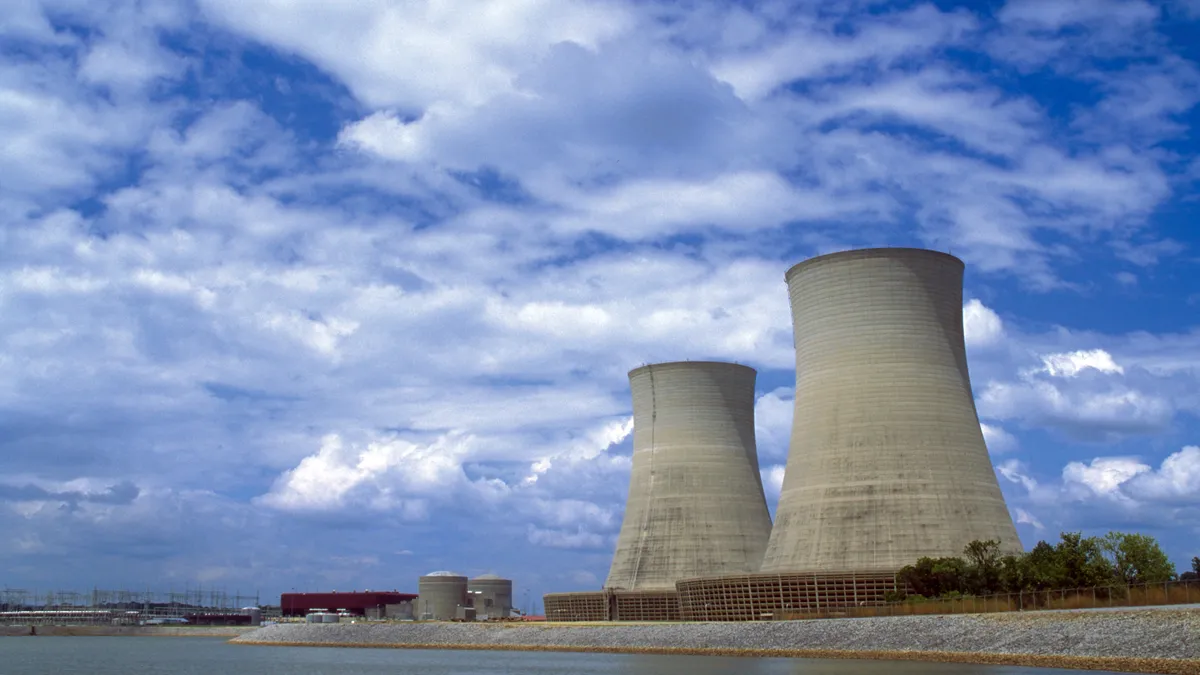Dive Brief:
- An internal cell failure in a single battery started a cascading thermal runaway event that resulted in the April 19, 2019, explosion at Arizona Public Service’s (APS) McMicken Battery Energy Storage System (BESS) facility in Surprise, Ariz., according to a report released Monday by the utility.
- Abnormal lithium metal deposits likely led to the internal failure, according to the report authored for APS by Davion Hill, U.S. energy storage leader for DNV GL, which provides advisory and analytics services to the energy industry. Contributing factors included a lack of thermal barriers between battery cells, a fire suppression system incapable of stopping the thermal runaway, a concentration of flammable off-gassing and a lack of planning and coordination with emergency responders.
- The energy storage system standard, or the National Fire Protection Association's Standard for the Installation of Stationary Energy Storage Systems (NFPA 855), does not address the physical construction of a battery but does have size limitations and separation criteria, according to an NFPA spokesperson. NFPA 855 provides requirements for fire suppression systems, exhaust and ventilation, and criteria for performance-based designs. An annex to the standard provides information on firefighting considerations, including pre-incident planning.
Dive Insight:
The McMicken facility was equipped with a Novec 1230 “total flooding” clean-agent fire suppression system, designed to extinguish fires involving ordinary combustible materials.
3M, the developer of the Novec 1230 clean agent, publicly acknowledged in 2017, during the development of NFPA 855, that the product is inadequate to prevent the cascading thermal runaway of multiple battery cells.
Local firefighters opened the BESS facility door approximately three hours after the battery thermal runaway began, resulting in an explosion that injured firefighters and hazardous materials responders. The new APS report includes recommendations for fire-suppression systems and emergency response planning.
The U.S. Energy Storage Association (ESA) has created an emergency response plan template and operational safety guidelines for energy storage installations, Kelly Speakes-Backman, CEO of ESA, told Utility Dive by email. ESA also launched a Corporate Responsibility Initiative (CRI) and pledge signed by more than 50 companies.
In addition to the emergency response plan template and operational safety guidelines, ESA’s CRI task force last year produced a white paper, “Operational Risk Management in the U.S. Energy Storage Industry: Lithium-Ion Fire and Thermal Event Safety.” Stationary energy storage systems must manage operational risks that include cybersecurity risks, extreme weather and natural disasters, and fire and thermal events, according to the white paper.
NFPA continues to sponsor research, outreach, and education into ESS fire safety through its Fire Protection Research Foundation (FPRF). FPRF was involved in an advisory service project with the University of Texas at Austin to research firefighter safety during BESS fires. The project produced a number of published studies, including one into the APS facility explosion along with a number of other fires and explosions from thermal runaway of lithium-ion batteries. FPRF will soon release a final report for the UT firefighter safety project.
The APS report concluded that four issues must be addressed in future BESS installations:
- Barriers to limit cell-to-cell and module-to-module cascading – modules were installed in close proximity to each other in the McMicken BESS, separated by aluminum, which sagged, permitting the thermal runaway to continue to propagate long after the fire-suppression system had discharged;
- Ventilation and cooling – the means to safely ventilate the system in a controlled manner to reduce the flammability of the atmosphere;
- A combined strategy of fire suppression followed by ventilation and cooling strategies – a clean agent or aerosol alone is not enough to prevent cascading thermal runaway or manage the concentration of flammable gases that follows; and
- Response procedures that incorporate system monitoring, the detection of gases, ventilation practices, extinguishing methods, and information to gather before entry; and procedures should be documented, available outside the BESS container or building, and demonstrated through training that is refreshed and updated periodically.













